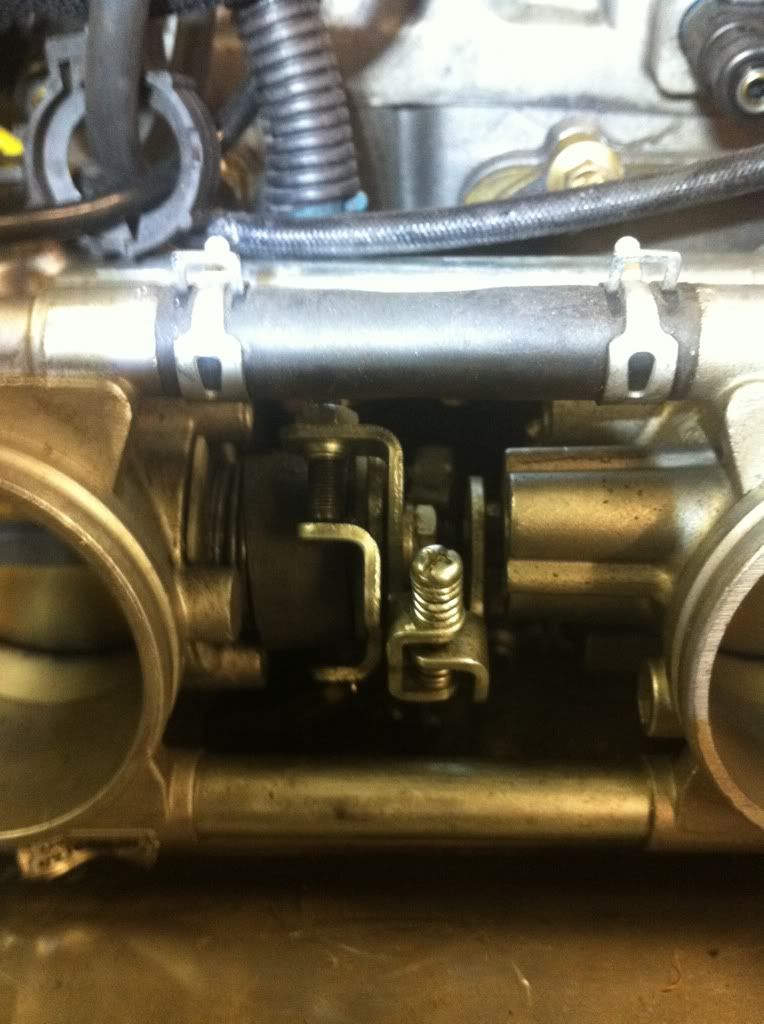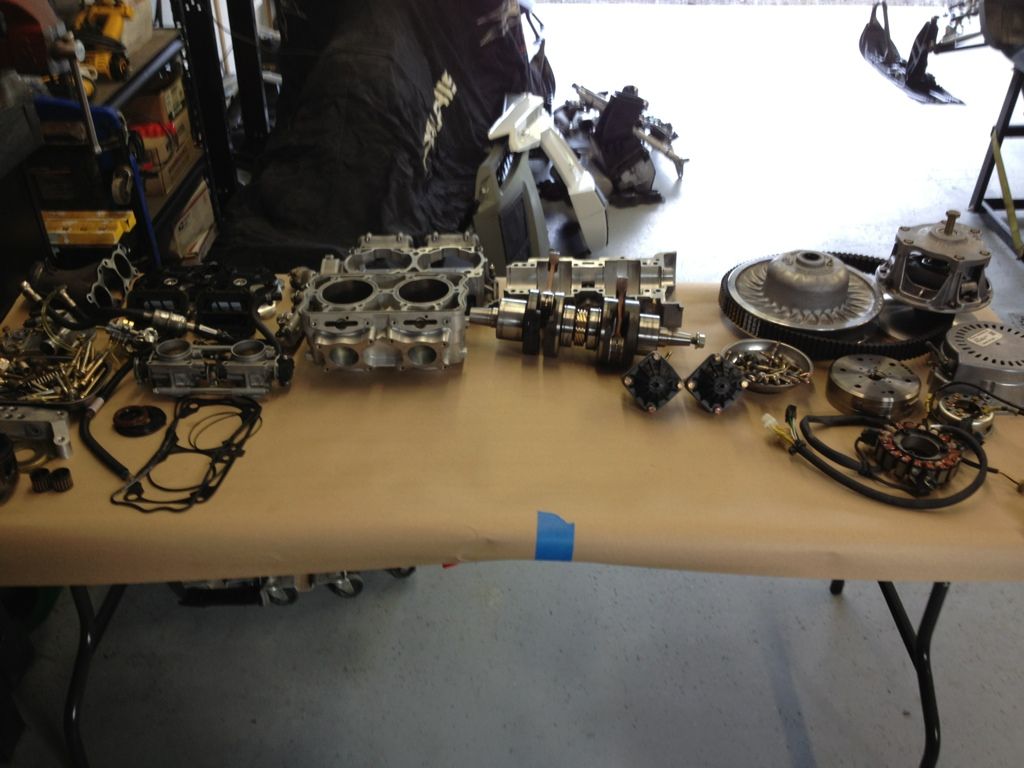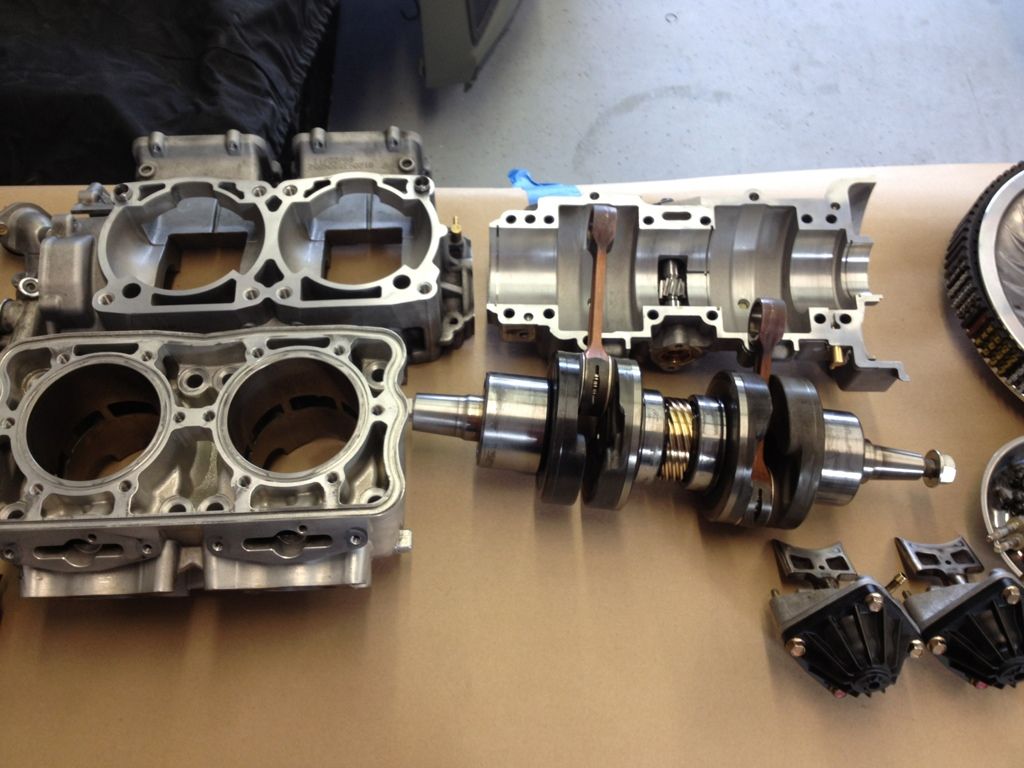O
The oil pump adjustment topic has been one of the hotter ones over the last year. I for one have until now, subscribed to the turn up the pump 3 turns (believing that it would increase the flow rate over the entire throttle range). Recently, there has been a post or two saying that adjusting the pump set screw only changes the flow rate at idle and nothing else. There was no explanation as to why it only changed the idle oil flow rate so I thought I would try to think about that as a possibility and try to understand and then explain it.
Here goes. On most other older sleds, you adjust the oil pump by adjusting the cable that splits off from the throttle cable. There is no set screw, just a cable adjustment to align the point on the oil pump arm and the oil pump body scribe mark. The cable will have two jam nuts that allow for this lengthening or shorting of the cable to align the marks.
On the PRO, the adjustment set screw just determines where the oil pump arm pointer and pump body scribe align. The only way to increase oil flow over the range of the arm swing, would be to shorten the cable thus, effecting the end (wide open/max flow) rate as well. Think of it this way... on older Mikuni rack carbs you adjust the idle (where the slide rests) by adjusting the idle slide stop screw. You adjust the wide open position of the slide with the cable adjuster. This is the same principle at play. Unless there is a way to shorten the oil pump cable you cannot change the oil flow rate and mid range or wide open throttle. Another difference in the PRO pump operation, is that in older sleds the pump arm spring would force the pump to max flow rate if the cable was to break, I have seen a few in my shop with a broken cable and they usually immediately foul the plugs and stall, or at least burn an excess of oil. On the PRO the spring forces the oil pump arm towards minimum flow and that’s why there is a set screw to set the min or idle flow rate.... in other words, a pump arm stop.
Additional proof for my hypothesis is, in the service manual for the PRO it explains how to prime the oil pump to remove any air from the oil lines. You are to use a wire/coat hanger and pull the pump arm all the way up (max flow) while the engine is at idle. So my conclusion is that the pump output is mostly determined by arm position relative to the pump body and less effected by engine rpm. If you want more oil over the entire throttle range, you have to be able to adjust the cable.
I will still add oil, 1 ounce per gallon just to be sure I’m getting adequate engine oiling.
I hope this helps a little and doesn't confuse more than it helps.
I also welcome any one who can prove that adjusting the pump set screw has any affect on oil pump flow rate off idle. Saying that oil tank usage increased after adjusting the set screw won’t convince me, I adjusted mine 3 turns and didn’t see any change in usage.
Here goes. On most other older sleds, you adjust the oil pump by adjusting the cable that splits off from the throttle cable. There is no set screw, just a cable adjustment to align the point on the oil pump arm and the oil pump body scribe mark. The cable will have two jam nuts that allow for this lengthening or shorting of the cable to align the marks.
On the PRO, the adjustment set screw just determines where the oil pump arm pointer and pump body scribe align. The only way to increase oil flow over the range of the arm swing, would be to shorten the cable thus, effecting the end (wide open/max flow) rate as well. Think of it this way... on older Mikuni rack carbs you adjust the idle (where the slide rests) by adjusting the idle slide stop screw. You adjust the wide open position of the slide with the cable adjuster. This is the same principle at play. Unless there is a way to shorten the oil pump cable you cannot change the oil flow rate and mid range or wide open throttle. Another difference in the PRO pump operation, is that in older sleds the pump arm spring would force the pump to max flow rate if the cable was to break, I have seen a few in my shop with a broken cable and they usually immediately foul the plugs and stall, or at least burn an excess of oil. On the PRO the spring forces the oil pump arm towards minimum flow and that’s why there is a set screw to set the min or idle flow rate.... in other words, a pump arm stop.
Additional proof for my hypothesis is, in the service manual for the PRO it explains how to prime the oil pump to remove any air from the oil lines. You are to use a wire/coat hanger and pull the pump arm all the way up (max flow) while the engine is at idle. So my conclusion is that the pump output is mostly determined by arm position relative to the pump body and less effected by engine rpm. If you want more oil over the entire throttle range, you have to be able to adjust the cable.
I will still add oil, 1 ounce per gallon just to be sure I’m getting adequate engine oiling.
I hope this helps a little and doesn't confuse more than it helps.
I also welcome any one who can prove that adjusting the pump set screw has any affect on oil pump flow rate off idle. Saying that oil tank usage increased after adjusting the set screw won’t convince me, I adjusted mine 3 turns and didn’t see any change in usage.
Last edited:







